Jewish New Year in War-Torn Ukraine
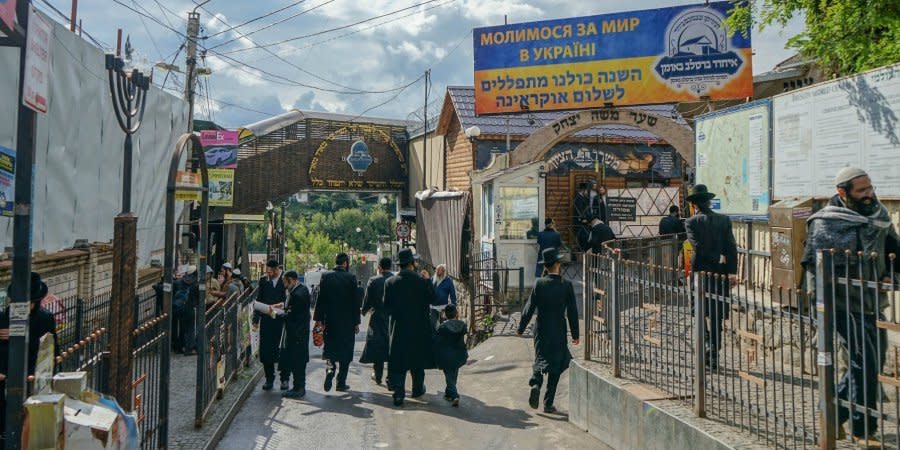
- Oops!Something went wrong.Please try again later.
For most of the 20th century since then, Hasids – a name for the collective ultra-orthodox sects of the Jewish faith, many of which were founded in Ukraine – suffered from Tsarist pogroms, Nazi genocide, and Soviet repression. But, every year for the Jewish new year celebration of Rosh Hashanah, they return to Uman. Many are members of the Breslover tradition, followers of Rabbi Nachman of Breslov, who lived at the turn of the 19th century and preached the values of ecstatic joy and private meditation. According to Hasidic tradition, Nachman told his followers to return to Uman, where he was buried, to spend the holiday with him. Over time, this annual pilgrimage has grown into a certified event – both for devoted students of Rabbi Nachman, and those who are simply curious about the draw that the small Ukrainian town holds for thousands of Jews every year.
This year, Rosh Hashanah fell on Sept. 25. However, 2022 posed a unique challenge to those seeking to continue with their traditions. What had become a raucous but ultimately routine holiday tradition was now being held under threat of attack by Russian saboteurs or even missile strikes – all due to Russia’s full-scale invasion. Yet even the war didn’t stop thousands of faithful from making the long journey to Uman. NV traced the path of pilgrimage – from a small village where Nachman was born to Bratslav, where he taught, and finally to Uman itself, where he died and was buried. We spoke with pilgrims, religious leaders, and members of the security services to know why so many accepted the risks to life and limb, to visit a country at war.
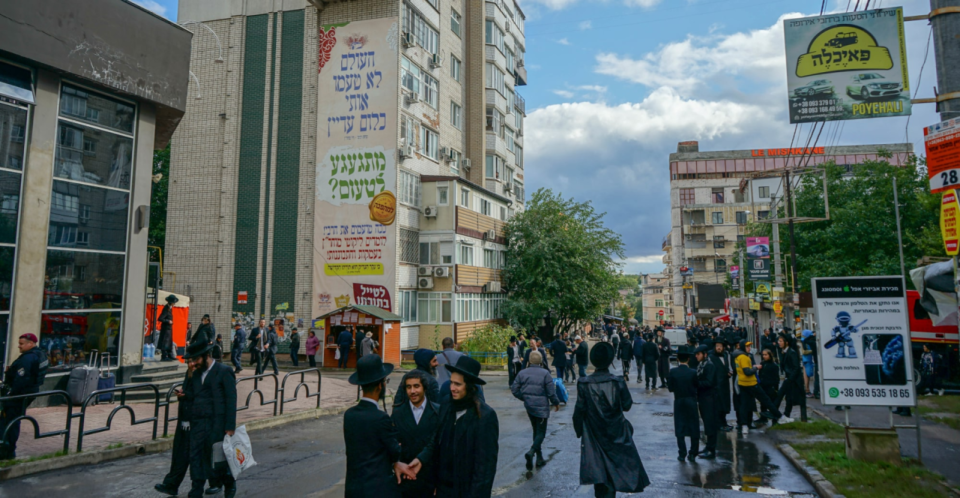
A Promise to a Friend
In the old shul – a Jewish place of study and worship – in Medzhybizh, at the site of the original synagogue used by the Baal Shem Tov, the name given to the founder of Hasidism, NV met Yaakov (real name withheld), an Israeli-American retiree who had been coming to Ukraine for the Rosh Hashanah pilgrimage every year for 25 years. His frequent travel to the country even led to close personal and business relationships with Ukrainians, and he expressed his attachment and fondness for the country.
“Ukraine has been developing so fast these last few years, and then the Russians came in and are trying to wipe that all out,” he explained.
“I served in the IDF for ten years. I considered volunteering for the Ukrainian army, but I’m retired. I can’t carry around that kit anymore.”
When asked about the threat of Russian missile strikes, Yaakov responded that it wasn’t really a concern. Uman had been hit in August, killing one, but is far away from any fighting and has not seen any attacks since then. Besides, he says, he is Israeli, and rockets are something one gets used to – a common refrain heard from many of this year’s Israeli visitors to Ukraine. While a Hamas-fired Qassam rocket has neither the payload nor the accuracy of a Russian ship-launched Kalibr cruise missile, the difference did not seem to register as being especially worrying to any of the pilgrims NV spoke to in Medzhybizh or elsewhere. An air raid alarm is an air raid alarm, and a shelter is a shelter, the attitude appeared to be, especially to people who have lived with those threats for decades.
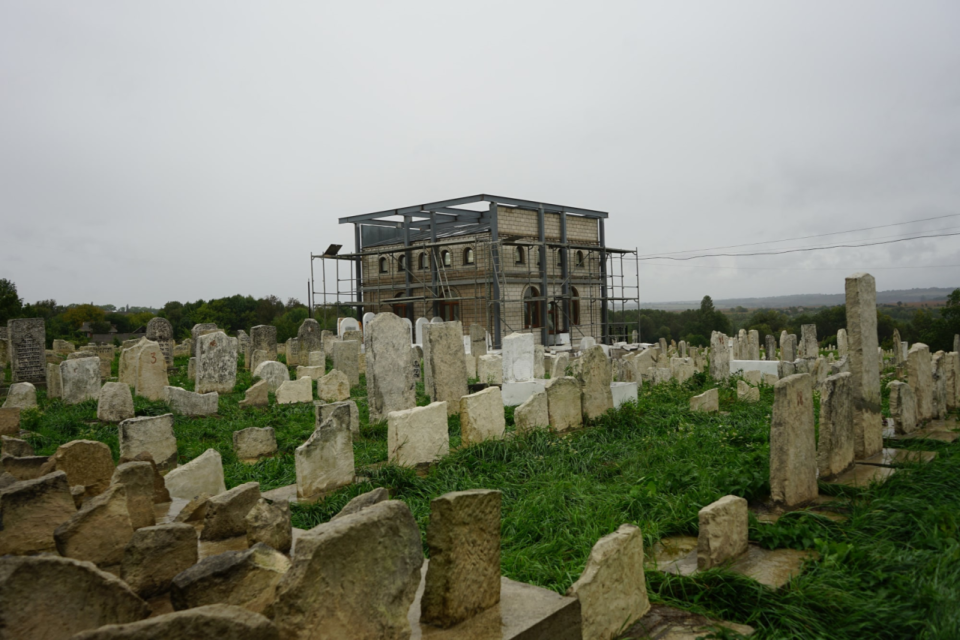
Despite the remoteness of Medzhybizh – the village has less than 2,000 permanent residents, and is located an hour east of the provincial capital of Khmelnytskyi in western Ukraine – Jewish pilgrims often make a special effort to visit the birthplace of the Hasidic movement. A group of young religious students and their adult escorts from central Israel had made the journey, and told NV about the experience. For some, it was their first time making the trip, but they had a particular reason for coming, despite the dangers of a country at war. Their friend and mentor, they said, had recently been killed in a terrorist attack in Israel. Throughout his life, this friend had followed the same path for Rosh Hashanah, starting in Krakow, Poland, and moving east, seeing the sites, until reaching the end of the journey, in Uman. In his will, he asked his friends to do the same. They explained that coming to Ukraine was not just a religious obligation for them – it was a promise to a friend.
The next step of the pilgrimage was to where Nachman spent most of his life teaching: the small town of Breslov, or, as it is known today, Bratslav. Hosting around 5,000 residents in a remote corner of Ukraine’s central Vinnytsia Oblast, the pilgrimage site is small, now containing not much more than the tomb of the Rebbe’s student and scribe, Nathan of Breslov, and the old Jewish graveyard surrounding it. But, like many of these locations around the country, it has developed rapidly to accommodate the regular influx of pilgrims, hosting a kitchen and a make-shift synagogue. Here, the Israelis we encountered repeated the now-common refrain: “If there is a Hezbollah rocket attack somewhere in the north, am I supposed to be worried in Eilat (a southern Red Sea resort town in Israel, near the Egyptian border – ed.)?”
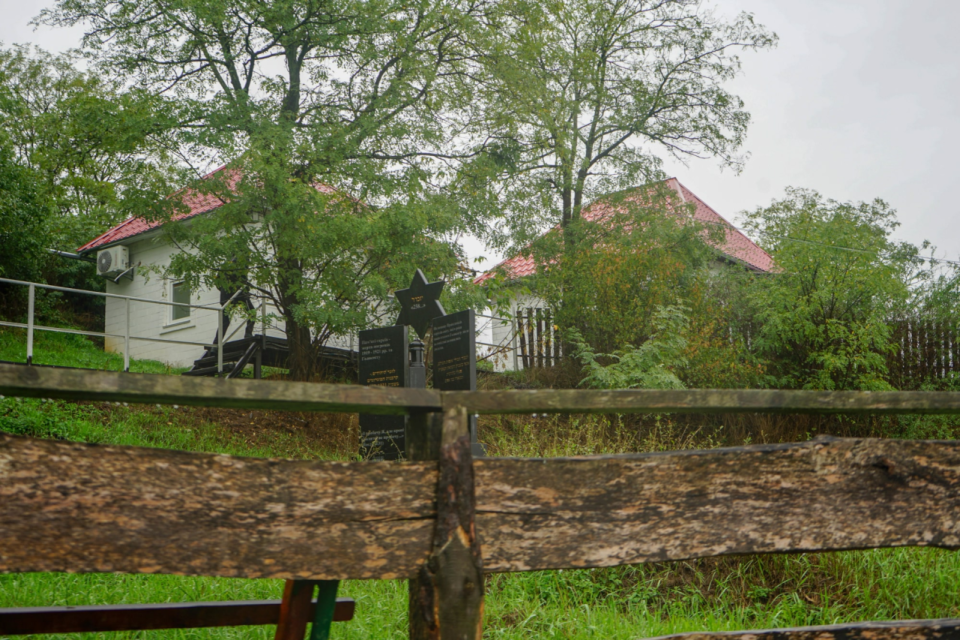
Little Israel in the Heart of Ukraine
The road to Uman from Bratslav is more or less a straight shot, about an hour and a half drive along sometimes bumpy and potholed country roads. Uman, home to around 80,000 people and located in the west of the central Ukrainian oblast of Cherkasy, is itself well-known for its expansive Sofia Park, built by Polish nobility in the 18th century. And unlike Bratslav or even Medzhybizh, Uman has adapted fully in order to accommodate its annual Rosh Hashanah visitors – even during wartime.
While military checkpoints have become a rarity this far from the front lines, the city was ringed with security forces and police, bussed in from as far away as Kyiv. Within Uman, the Hasids typically keep to the Pushkina Street district, a city-within-a-city that has grown around Nachman’s tomb. Now, it’s filled with hotels, synagogues, and kosher eateries to serve the tens of thousands of annual guests. In any normal year, entry is as simple as walking just down the hill from the city center into what resembles a bustling slice of Jewish Brooklyn or the Tel Aviv suburb of Bnei Brak. But due to the war, all the entrances to this Little Israel were blocked by police-manned checkpoints. Entry for pilgrims required first registering with the police, either at Uman’s main police station or at a checkpoint and processing site set up off of the highway exit.
Once inside, however, the festival atmosphere was readily apparent - with some exceptions. Signs pointing to the location of the nearest bomb shelters had joined the ranks of Hebrew-language ads, religious notes, and maps. And there were far fewer people. Normally, pilgrims spend much of the week leading up to the holiday within Uman. Yet, even by Sept. 21 – a mere four days from the holiday – Pushkina Street was comparatively empty. According to a rough estimate taken by NV, there were only a few thousand pilgrims on that day at most, compared to the pre-pandemic and pre-war peaks of up to 50,000. Estimates provided by event organizers were a bit rosier, somewhere in the range of a little over 20,000 prior to Sept. 25 itself.
Taking a short turn off of Pushkina Street, about a block away from Nachman’s tomb, is the Breslov Research Institute. With several international offices, the BRI is a major publishing house for works related to Breslov philosophy. Breslovers are not a centrally organized movement – Nachman never created a dynasty as is the case with most other Hasidic groups – so foundations like it are the main vehicle for carrying the tradition forward. Despite the challenges posed by the full-scale invasion, their holiday programming did not slow down, representatives said, and having an enclosed campus where their students do not have to leave even allowed them to continue their prayers and study past the curfew hour at 11:00 pm.
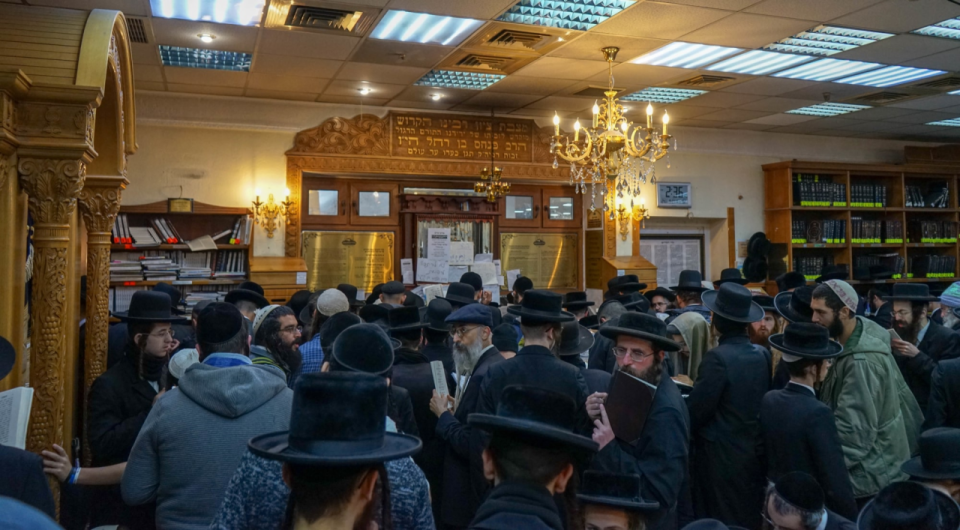
Loving kindness
NV spoke to the spiritual head of the BRI, Rabbi Chaim Kramer, resting in one of the on-site dorm rooms. He explained, in an old Brooklyn Jewish accent, that “Not everyone is righteous. We all make mistakes and do things we shouldn’t do. But the way we affect judgment is through loving kindness. We insert loving kindness so judgment is tempered. And so Rabbi Nachman tells us that by being together with him on Rosh Hashanah we can increase that kindness.”
Bresolvers have been making this pilgrimage in spite of war, Soviet persecution, and the criminality of the 90s, and would not be deterred now, either, he told NV. We asked why this pilgrimage is so important, to risk war and death.
“Faith leads to knowledge,” Rabbi Kramer responded.
“You believe and then you try to learn. 63 years of study and I have seen only a glimpse of what Rosh Hashanah truly means.”
As Rosh Hashanah drew to a close, the pilgrim’s faith turned out to be warranted. The holiday passed without incident, without Russian bombs or saboteurs. Despite the air raid sirens, no strikes were recorded even close to Uman’s vicinity over the week. And Ukraine’s far-right, often touted by Russian propagandists as a unique threat to minorities in the country, failed to make an appearance – save perhaps in Russian propagandist nightmares.
None of the pilgrims NV spoke to considered them anything to worry about. Chaim has had some run-ins with gangs over the years, especially in Ukraine’s rough-and-tumble 90s, while Yaakov claimed that there were sometimes some drunks who would cause issues. But nothing violent, and hardly unique to any one country. There were no notable reports of such disturbances this year.
As the sun set on the second day of the new Jewish year of 5783, the pilgrims returned to their homes in the United States, Israel, Australia, all over the world, including a few Jewish-Ukrainian soldiers. They will return next year, and the year after that, seeking the loving kindness of Uman’s Rosh Hashanah.
By Anthony Bartaway, with contributions from Romeo Kokriatski
Read the original article on The New Voice of Ukraine

